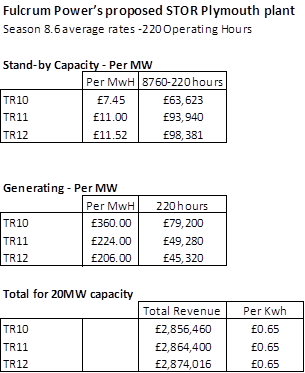Ed Davey, Secretary of State for Climate and Energy has, according to the Telegraph recently said
“Of course there will always be uncertainties within climate science and the need for research to continue.
I agree that there are uncertainties with climate science. But if you only allow believers in that “science” to contribute, without any training in decision-making under conditions of uncertainty, then the conclusions drawn out of that research will be wrong.
“But some sections of the press are giving an uncritical campaigning platform to individuals and lobby groups,”
Such as the Guardian, the BBC, or central government departments? It can work both ways.
“This is not the serious science of challenging, checking and probing.”
Are you speaking of sceptics or of climatology? You must first establish that climatology is not just a science, but is a science of the highest standards.
“This is destructive and loudly clamouring scepticism born of vested interest, nimbyism, publicity seeking contraversialism or sheer blinkered, dogmatic, political bloody-mindedness.”
Matthew 7:3-5 says
Why do you stare at the splinter in your neighbour’s eye, but ignore the plank in your own? How can you say to your neighbour “Here – let me get the splinter out of your eye,” when you’ve got the plank in your own? You’re just play-acting! First take the plank out of your own eye, then you’ll see clearly to take the splinter out of your neighbour’s eye.”
These two thousand year old words, translated by Tom Wright (Britain’s leading New Testament Scholar and former Bishop of Durham), show the issue of climatology. Professor Stephan Lewandowsky or Bob Ward, or desmogblog are some of the “planks” that deliberately blind and prejudice people from examining the evidence, moral and political arguments for themselves. Putting in a milder fashion, you cannot say that people are wrong, or have a massively inferior argument, if you cannot first demonstrate that you are on the side of truth, or encourage others compare and contrast your arguments with the opponents. As I posted last week, there is a strong lack of a positive case for the science. As I posted last week, this should be a combination of trumpeting the short-term predictive successes, showing that climate science build on the traditions of the greatest scientists and philosophies of science and also of the moral case covered below.
“This tendency will seize upon the normal expression of scientific uncertainty and portray it as proof that all climate change policy is hopelessly misguided.”
Rubbish. Criticism of policy is often for separate reasons to scientific uncertainty. The argument is that the costs of policy are far greater than then benefits. Some of the policy might be totally ineffective, or in trying to reduce CO2 emissions may make people less capable of dealing with the impacts, through making them poorer.
He added: “By selectively misreading the evidence, they seek to suggest that climate change has stopped so we can all relax and burn all the dirty fuel we want without a care.”
Sceptics say that climatologists selectively read the evidence. Many would say that increased CO2 provides net benefits, and I do not come across any blog that we should create general pollution without a care. Many of the leading sceptic blogs (WUWT, BishopHill, Jo Nova) accept that increased greenhouse gases will lead to some level of warming, but not a significant one. As put by Warren Meyer, most sceptics deny the catastrophe, not the basic science.
“Those who argue against all the actions we are taking to reduce emissions, without any serious and viable alternative, are asking us to take a massive gamble with the planet our children will inherit, in the face of all the evidence, against overwhelming odds.”
I believe that morally politicians should act like medical professionals. They should have a duty of care towards the patient. That duty should be based on the reasonable expectation that treatment will leave the patient better off than not being treated at all. If anyone claims that climatology and public-policy making have the same level of knowledge of diagnosis and treatment as medical professionals and pharmacy on such ailments as common cancers or arthritis, then they are wrong. I would say that climate “ethics” needs to catch up with medical ethics as well.
Finally, let me point to four areas where Ed Davey is severely out of line.
First, my late father voted for the Liberal Party for over 50 years at every election – bar at one local election where no Liberal was standing. Then he voted for the underdog Conservative candidate. He believed in the consensus through seeking the middle ground, a thoroughly British trait. This middle ground was the opposite of the extremism of climatology, which is increasingly about demeaning the opposition and denying them a platform to speak.
Second, a virtue of English Common Law is that of letting the accused have the same rights of presentation, and to have the same rules of evidence as for the prosecution. This is not in the belief that the most notorious criminals can get off scot free. It is because the most guilty who proclaim their innocence will most convince an independent jury of their guilt as their lies and ridiculous stories unravel. On the other side, if the prosecution, convinced of the guilt of the accused perverts or supresses the evidence, the later unravelling of the case will undermine the rule of law. It did with the Guildford Four and the Birmingham Six, men falsely sentenced for heinous crimes that they did not commit. Another example is that I strongly believe that those who do not accept that around six million Jews were massacred in the Nazi genocide should not be silenced. Rather, comparing their evidence will the overwhelming evidence of the historical truth will demonstrated that there is no debate, and those deniers are have an inability to assess the evidence. Silencing such views will lead to false conspiracy theories that there is something to hide.
Third, is the British sense of fair play. The very British idea of having a level playing field is not unconnected to the fact that most major sports are British inventions, or have been strongly influenced by British rule-making. Winning is not at any cost is not the point. It is playing the game to the best of one’s ability. There is a lesson in life as well. Somebody might be far superior in a sport, or in science, or in any intellectual field, than anyone else alive. But it is only by going head-to-head with others that everyone will be convinced. But in losing in sport, we go back and try harder. If we are beaten in science, we are forced to re-examine our conclusions, and may improve. Finding out where we went wrong, or how to improve from failures is a general lesson in life. Within wider society it leads to improvement.
Fourth is something very anti-British. The most evil powers, whether governments, religious cults or tribal gangs, are those who assert their power by belittling and silencing others. Ed Davey and climatologists are not in their league by any means. But they fall into a false sense of superiority by demeaning others. It is a very human trait to practice this, but has mostly held back humanity.
The previous Secretary of State, Chris Huhne, earlier this year convicted of perverting the course of justice, was similarly dogmatic. Why there should be two ministers so at odds with the older philosophy of the moderate Liberal Party traditions is the subject of the next post.










